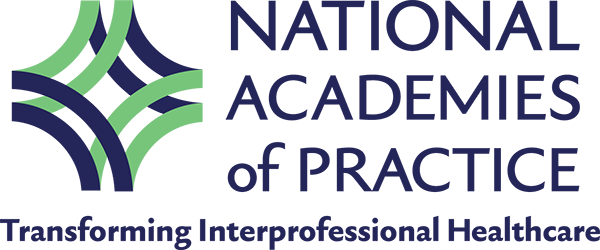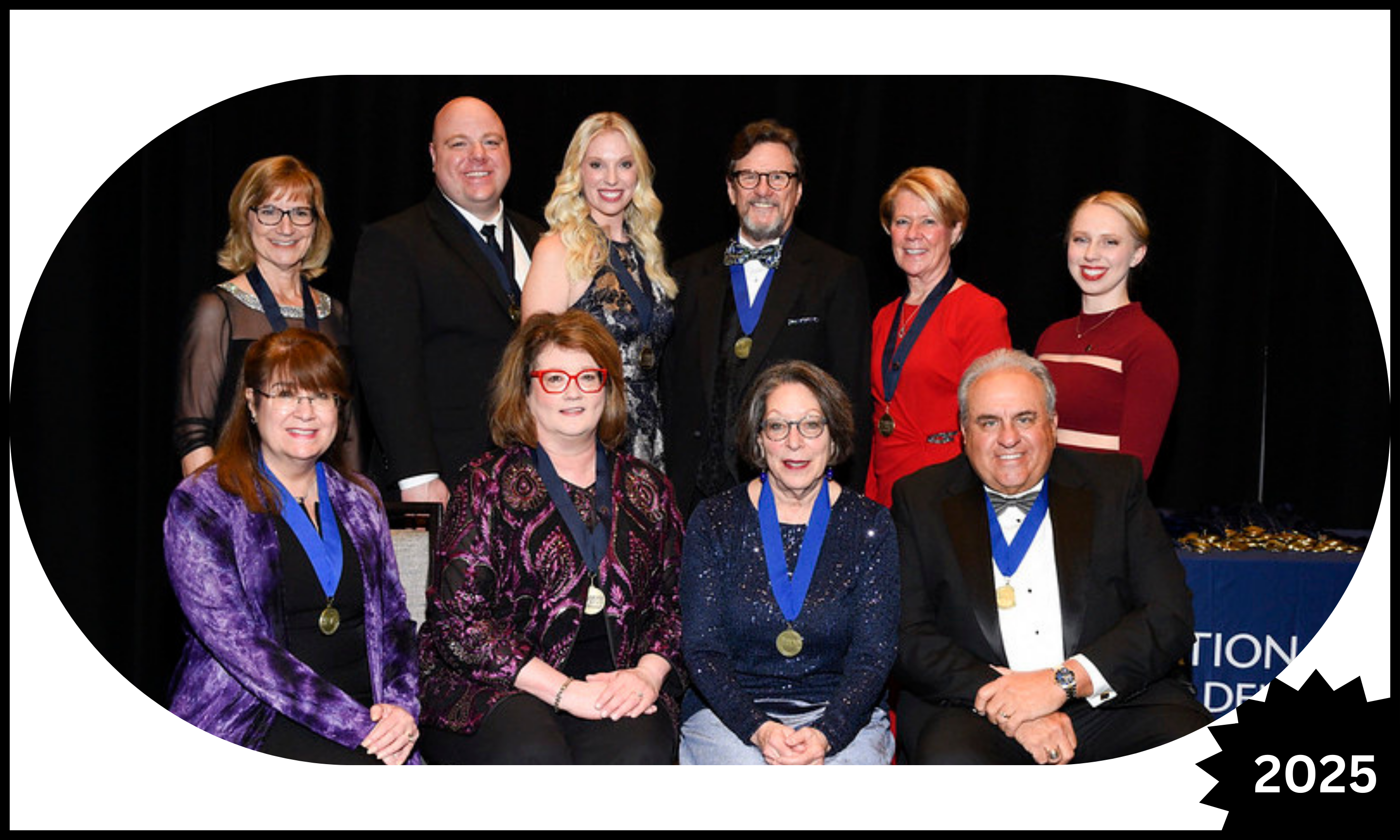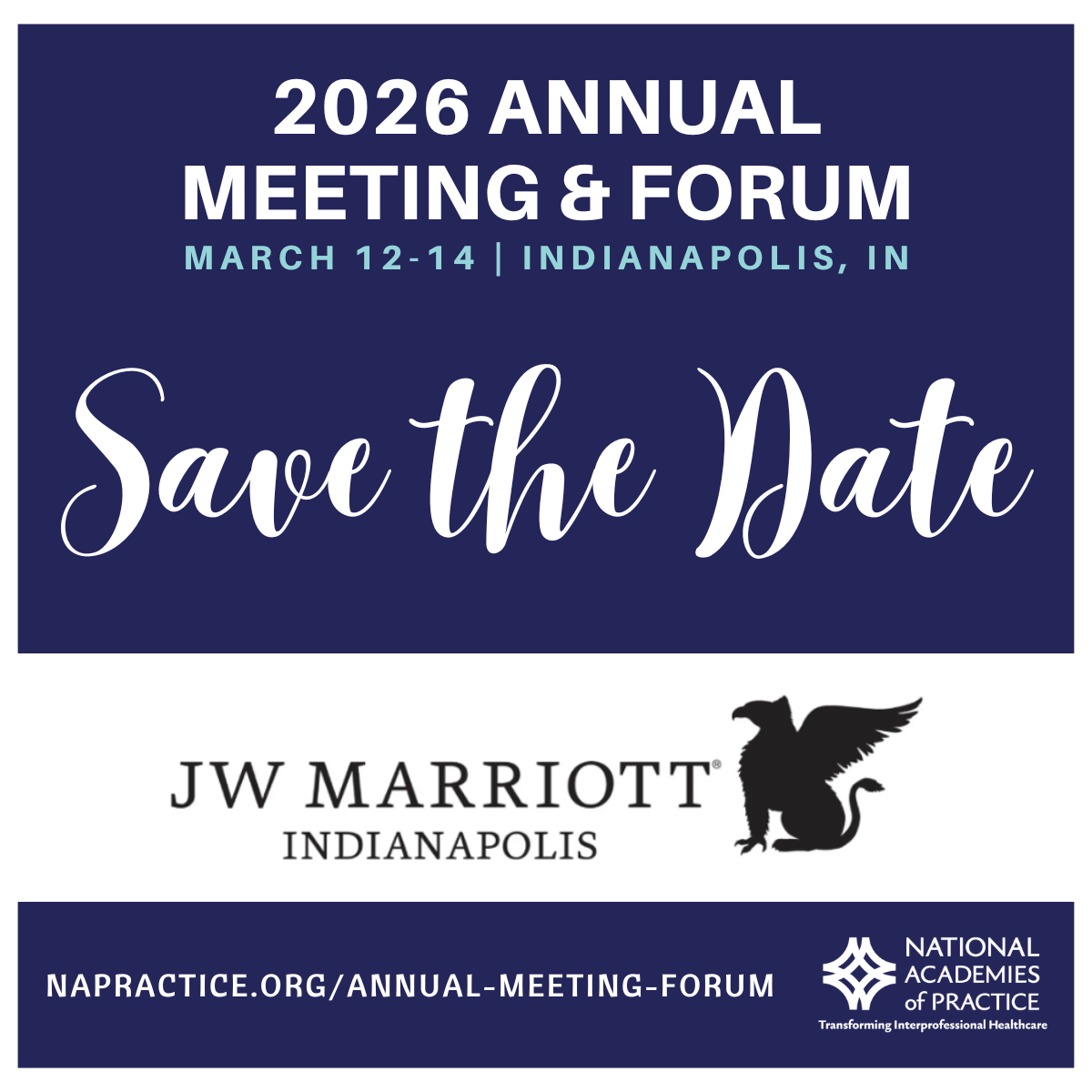- Home
- About NAP
- Academies
- Membership
- Public Policy and Advocacy
- Resources
- Events
- Contact Us
|
|
| Academy Chair | Academy Chair-Elect |
|
|
|
Audiology's Scope of Practice and Role
in Interprofessional Healthcare
2023 Audiology Academy Report
What is an Audiologist?
The profession of Audiology is dedicated to the diagnosis and rehabilitation of hearing loss.
An Audiologist can provide you with answers to questions like these:
- What do you do when you find out that you or a loved one has a hearing loss?
- Who do I turn to for quality hearing health care?
- Can my hearing loss be helped with hearing aids?
- What are the different types of hearing loss?
An Audiologist is the professional who specializes in evaluating and treating people with hearing loss, Audiologists have extensive training and skills to evaluate the hearing of adults, infants and children of all ages. Audiologists conduct a wide variety of tests to determine the exact nature of an individual's hearing problem. Audiologists present a variety of treatment options to patients with hearing impairment. Audiologists dispense and fit hearing aids, administer tests of balance to evaluate dizziness, and provide hearing rehabilitation training. Audiologists refer patients to physicians when the hearing problem needs medical or surgical evaluation.
Most Audiologists work in healthcare facilities, such as audiology clinics, medical offices and hospitals. Many work in schools or for school districts, healthcare retail stores, in the military or VA, or in industrial audiology and hearing conservation - monitoring hearing loss resulting from noise exposure.
Source
Focus on Audiology and the NAP Audiology Academy
The NAP Audiology Academy was founded in 2014 by Dr. Victor Bray, MSC, PhD, FNAP, who was then-Dean of the Osborne College of Audiology at Salus University. Four members were inducted into the inaugural NAP Audiology Academy and it has since grown to include more than 40 Fellows. The NAP Audiology Academy seeks to raise awareness about the profession of Audiology and its critical role in creating a sound [pun intended] interprofessional foundation for health care that addresses the whole person. Consistent with the NAP’s mission, the NAP Audiology Academy also strives to work interprofessionally with the other NAP academies to impact national policies on health care.
The Profession of Audiology
Audiologists help address hearing and balance disorders and related issues through evaluation, diagnosis, treatment, and management of individuals of all ages. The American Academy of Audiology’s scope of practice for Audiologists includes the following (retrieved 8/3/2017 from https://audiology.org/publications-resources/document-library/scope-practice):
- Examining patients who have hearing, balance, or related ear problems;
- Assessing examination results and diagnosing disorders;
- Developing and administering treatments to meet patients’ goals and needs;
- Prescribing and dispensing hearing instruments as part of integrated, personal communication systems;
- Providing auditory and vestibular rehabilitation;
- Providing treatment for tinnitus (a condition that causes ringing or other sounds in the ear or ears) and hyperacusis (a condition of hypersensitivity to sounds);
- Counseling patients and their significant others on improved communication strategies, including for talking, listening, and environmental modifications to enhance audibility;
- Evaluating patients regularly to check on hearing and balance status and to continue with or modify treatment plans;
- Educating patients and their significant others on ways to prevent hearing and balance disorders, whether at home, at work, or recreationally;
- Researching the causes and treatment of hearing and balance disorders; and
- Developing amplification devices for the treatment of individuals with hearing impairment.
The entry-level education requirement for Audiologists is a post-baccalaureate, clinical doctorate, typically the Doctor of Audiology or “AuD” degree, and Audiologists must also typically have a government-issued license to practice. In 2016, the U.S. Bureau of Labor Statistics reported there were 13,200 audiologists employed in the country and that the job outlook was projected to grow much faster, at 29% growth, than the average for all professions through 2024 (retrieved 8/3/2017 from www.bls.gov/ooh/healthcare/audiologists.htm#tab-6).
Hearing and Balance Disorders
Hearing and balance disorders can result from a variety of causes, including gestational problems, genetic disorders or differences, viral infections, physical trauma, ototoxic medications, acoustic trauma through exposure to loud sounds, and aging, among many other causes and comorbid pathologies (U.S. National Library of Medicine; retrieved 8/3/2017 from https://medlineplus.gov/hearingdisordersanddeafness.html).
Hearing and balance disorders are significant public health concerns. Here are some sobering statistics from the Hearing Health Foundation (retrieved 8/3/2017 from https://sophia-boccard-lsf6.squarespace.com/hearing-loss-tinnitus-statistics/?rq=hearing%20loss%20statistics):
- The number of Americans with hearing loss doubled and globally the number was up by 44% over the five-year period from 2000 to 2015;
- In real numbers, that’s 48 million Americans and 360 million worldwide;
- About 3 out of 1000 newborns have significant hearing loss;
- 1 in 5 teens has hearing loss;
- Hearing loss is the third most prevalent chronic health condition in senior citizens, exceeded only by arthritis and hypertension;
- Hearing loss and tinnitus are the top two health concerns reported by active service members and veterans;
- 16 million people have sought medical attention for tinnitus in the past year;
- The risk of dementia may be up to five times greater and the risk of falling three times greater among people with untreated hearing loss;
- Hearing loss is the second most prevalent health issue globally;
- The number of people with hearing loss is more than those with Parkinson’s, epilepsy, Alzheimer’s, and diabetes combined.
Additionally, falls are a leading health concern for older Americans according to the U.S. Centers for Disease Control and Prevention, which provides equally sobering statistics (retrieved 8/3/2017 from https://www.cdc.gov/injury/features/older-adult-falls/).
- One-fourth of Americans aged 65+ fall each year;
- Falls are the leading cause of fatal injury and the most common cause of nonfatal, trauma-related hospital admissions among older adults;
- Every 11 seconds, an older adult is treated in the emergency room for a fall;
- Every 19 minutes, an older adult dies from a fall.
Left untreated, hearing loss can negatively affect communication in all ages, including speech and language development in early childhood (American Speech-Language-Hearing Association, (retrieved 8/3/2017 from http://www.asha.org/Articles/Untreated-Hearing-Loss-in-Adults). Both untreated hearing and balance disorders can negatively impact the quality of a person’s life, including economic health (reduced occupational opportunities and income), psychosocial health (withdrawal and isolation), and mental health (cognition, depression, and even suicide), among other social determinants of health, in addition to harming patient-provider communications and patient compliance with healthcare provider treatment plans (Healthy Hearing, retrieved 8/3/2017 from http://www.healthyhearing.com/report/52437-The-complex-link-between-depression-and-hearing-loss).
‘True Story’ case example: A physically and medically frail 96-year, male patient was hospitalized with pervasive declining health. The patient was described as being mentally ‘out of it’ but no formal assessment of cognitive function had been done because of the patient’s advanced age. The attending nurse questioned the patient’s hearing, so a bedside hearing test was scheduled. The results showed a moderately severe hearing loss, likely due to aging, of sufficient degree to prevent the patient from hearing everyday conversation. After a hearing aid was fit, the patient began conversing lucidly with family members and the medical staff. The patient’s initial response was, “It’s a miracle!” The patient was still a frail, 96-year old with pervasive declining health, and there may still have been some cognitive decline, but the patient was able to enjoy conversation with loved ones and hear information from the medical team. The identification and treatment for hearing loss dramatically changed and refocused the interprofessional treatment plan for this patient.
Because hearing and balance disorders are such pervasive public health concerns with such potentially significant negative consequences if left untreated, Audiology is an essential part of health care. Not all hearing and balance disorders are so easily remediated as described in the ‘true story,’ and not all treatments can have such a strong effect, but addressing hearing and balance disorders is a vital component of healthcare. Unfortunately, hearing and balance disorders can be left untreated or with insufficient treatment for a variety of reasons, including lack of awareness of hearing and balance issues and their potential impact on a person’s life. The NAP Audiology Academy hopes to bring awareness to these public health issues and work collaboratively with all the NAP academies to overcome the negative effects of untreated hearing and balance disorders, which can affect daily practice for all health care providers.
NAP/IPE Connections
The members of the NAP Audiology Academy were surveyed in February-March 2017 to determine the extent of interprofessional practice occurring among Audiology and the other NAP professions. (Bray, 2017). The results were that approximately 60% of the Audiology members were involved in interprofessional practice with Medicine; approximately 40% with Physical Therapy, Psychology, and Speech-Language Pathology; approximately 30% with Nursing and Optometry; and approximately 20% with Pharmacy, Dentistry and Social Work. The results are encouraging for the Audiology Academy regarding Audiology’s inclusion in health care, and the results are equally encouraging for all of the NAP academies regarding the positive impact on health care through interprofessional connections and collaboration. The results may also reflect the growing support for interprofessional education and collaborative practice by the various professional associations and accrediting bodies.
NAP Audiology Academy members, along with their Fellow colleagues throughout the NAP academies, believe that addressing the whole person provides better health care, treatment outcomes, and preventive care. It is the goal of ongoing educational and research efforts to document the powerful impact of interprofessional practice and education (for examples, see Green & Johnson, 2015; Nester, 2016; Reeves, Palaganas, & Zierler, 2017). It is hoped that doing so will help achieve the ultimate goal of the “Triple Aim” of healthcare to improve the patient experience of care, improve the health of populations, and reduce the per capita cost of health care (Institute for Healthcare Improvement, retrieved 8/3/2017 from http://www.ihi.org/Engage/Initiatives/TripleAim/Pages/default.aspx), along with the proposed “Quadruple Aim,” which adds improving the work life of health care providers (Bodenheimer & Sinsky, 2014). The deliberate inclusion of Audiology as an essential part of an interprofessional healthcare approach is a critical step toward appropriate recognition and relevance for the Audiology profession and a vital step for the holistic healthcare of the individuals served by all the healthcare providers represented in the NAP.
References
- American Academy of Audiology. Scope of practice. Retrieved 8/3/2017 from https://audiology.org/publications-resources/document-library/scope-practice.
- American Speech-Language-Hearing Association. Untreated hearing loss in adults – A growing national epidemic. Retrieved 8/3/2017 from http://www.asha.org/Articles/Untreated-Hearing-Loss-in-Adults/.
- Bodenheimer, T., & Sinsky, C. (2014). From triple to quadruple aim: Care of the patient requires care of the provider. Annals of Family Medicine, 12(6), 573-576. https://doi.org/10.1370/afm.1713
- Bray, V.H. (2017, March). Introduction to the Audiology Academy of the National Academies of Practice. Poster session presented at the NAP Annual Meeting & Forum, Philadelphia, PA.
- Green, B.N., & Johnson, C.D. (2015). Interprofessional collaboration in research, education, and clinical practice: Working together for a better future. Journal of Chiropractic Medicine, 29(1), 1–10. https://doi.org/10.7899/JCE-14-36
- Healthy Hearing. The complex link between depression and hearing loss. Retrieved 8/3/2017 from http://www.healthyhearing.com/report/52437-The-complex-link-between-depression-and-hearing-loss.
- Hearing Health Foundation. Hearing loss and tinnitus statistics. Retrieved 8/3/2017 from https://sophia-boccard-lsf6.squarespace.com/hearing-loss-tinnitus-statistics/?rq=hearing%20loss%20statistics.
- Institute for Healthcare Improvement. The IHI Triple Aim. Retrieved 8/3/2017 from http://www.ihi.org/Engage/Initiatives/TripleAim/Pages/default.aspx.
- Nester, J. (2016). The importance of interprofessional practice and education in the era of accountable care. North Carolina Medical Journal, 77(2), 128-132. https://doi.org/10.18043/ncm.77.2.128.
- Reeves, S., Palaganas, J., & Zierler, B. (2017). An updated synthesis of review evidence of interprofessional education. Journal of Allied Health, 46(1), 56-61.
- U.S. Bureau of Labor Statistics. Audiologists – Job Outlook. Retrieved 8/3/2017 from www.bls.gov/ooh/healthcare/audiologists.htm#tab-6.
- U.S. Centers for Disease Control and Prevention. Important facts about falls. Retrieved 8/3/2017 from https://www.cdc.gov/homeandrecreationalsafety/falls/adultfalls.html.
- U.S. National Library of Medicine. Hearing disorders and deafness. Retrieved 8/3/2017 from https://medlineplus.gov/hearingdisordersanddeafness.html.
Learn More
- Audiology-related IPE activity example:
- Goal: To identify interprofessional healthcare strategies to address hearing impairment and/or balance disorders comorbid with other health/social issues.
- Activity: Gather an interprofessional group of healthcare providers, educators and/or students to: (1) discuss case studies of patients with hearing impairment and/or balance disorders comorbid with other health/social issues; (2) share various diagnostic and treatment approaches to patient care for these cases, considering comorbidities and social determinants of health, viewed through the lens of interprofessional, whole-person care; and (3) identify at least five opportunities in each case to facilitate an interprofessional healthcare approach to enhance patient care and life quality.
- Sample Case Study: A 60-year old male with known hearing loss has been experiencing frequent imbalance, intermittent dizziness, and lightheadedness in the last few months, which are provoked by head movement and change in body position. The patient was in a motor vehicle accident two years ago (car hit from behind) with resulting concussion and neck pain, although his CT and MRI scans at that time were unremarkable. The diagnosis was benign paroxysmal positional vertigo (BPPV), possibly related to concussion and whiplash. The patient has also reported anxiety, lack of confidence in walking, depression, and insomnia, and he also wears amplification for hearing loss, which is presumed to be age-related. His treatment has included injections in the neck for pain management, with resulting decreased pain. Mirtazapine was attempted but it caused fatigue so it was discontinued. The patient reported that he was previously told there was nothing more that could be done.
- Sample of Audiology professional organizations:
- Academy of Doctors of Audiology: https://audiologist.org
- Academy of Rehabilitative Audiology: https://audrehab.org
- Accreditation Commission for Audiology Education: https://acaeaccred.org
- American Academy of Audiology: https://audiology.org
- American Speech-Language-Hearing Association: https://asha.org
- Canadian Academy of Audiology: https://canadianaudiology.ca
- Council of Academic Programs in Communication Sciences and Disorders: https://capcsd.org
- Council on Academic Accreditation in Audiology and Speech-Language Pathology: https://caa.asha.org
- Hearing Health Foundation: https://hearinghealthfoundation.org
- Speech-Language & Audiology Canada: https://sac-oac.ca
- Suggested additional readings:
Chisolm, T.H., Johnson, C.E., Danhauer, J.L., Portz, L.J., Abrams, H.B., Lesner, S., McCarthy, P.A., & Newman, C.W. (2007). A systematic review of health-related quality of life and hearing aids: Final report of the American Academy of Audiology Task Force on the Health-Related Quality of Life Benefits of Amplification in Adults. Journal of the American Academy of Audiology, 18(2), 151-183.
Friberg, E., Gustafsson, K., & Alexanderson, K. (2012). Hearing difficulties, ear-related diagnoses and sickness absence or disability pension – A systematic literature review. BMC Public Health, 12, 772. https://doi.org/10.1186/1471-2458-12-772
Goldberg, L.R. (2015). The importance of interprofessional education for students in communication sciences and disorders. Communication Disorders Quarterly, 36(2), 121-125. https://doi.org/10.1177/1525740114544701
Jenstad, L.M., & Donnelly, M. (2015). Hearing care for elders: A personal reflection on participatory action learning with primary care providers. American Journal of Audiology, 24, 23-30. https://doi.org/10.1044/2014_AJA-14-0051
Jerger, J. (2009). Audiology in the USA. San Diego, CA: Plural Publishing.
Serpanos, Y.C., Senzer, D., & Gordon, D.M. (2017). Interprofessional peer-assisted learning as a model of instruction in Doctor of Audiology programs. American Journal of Audiology, July 13: 1-9. [ePub ahead of print]. https://doi.org/10.1044/2017_AJA-17-0012



